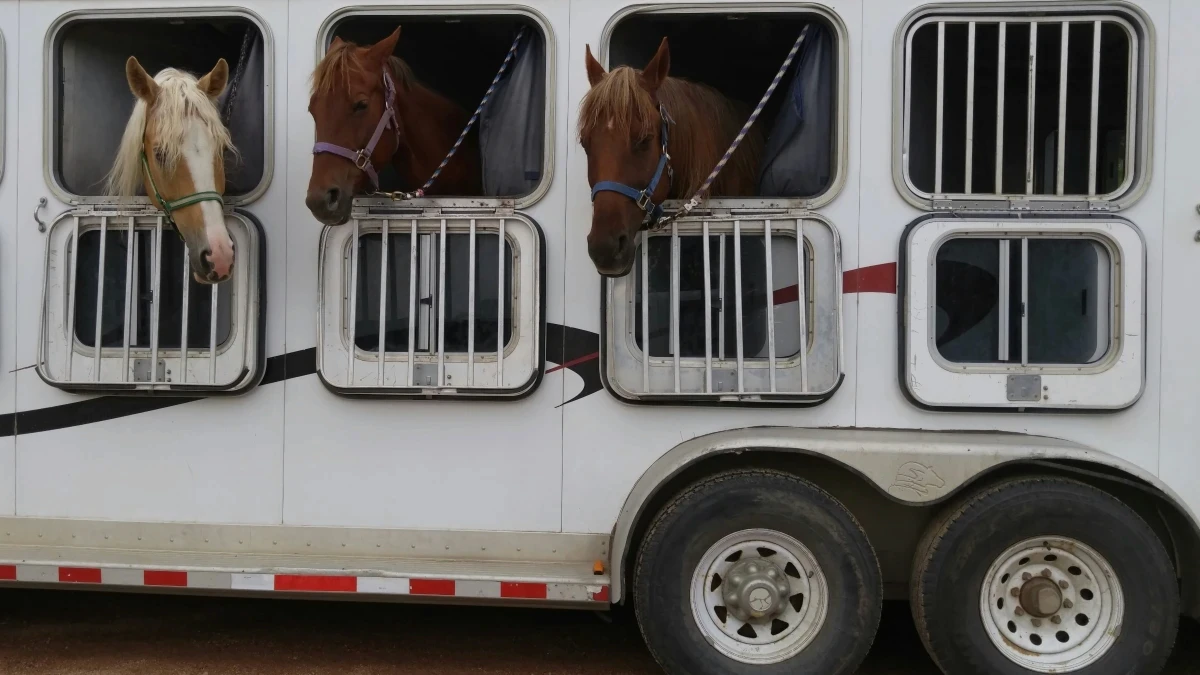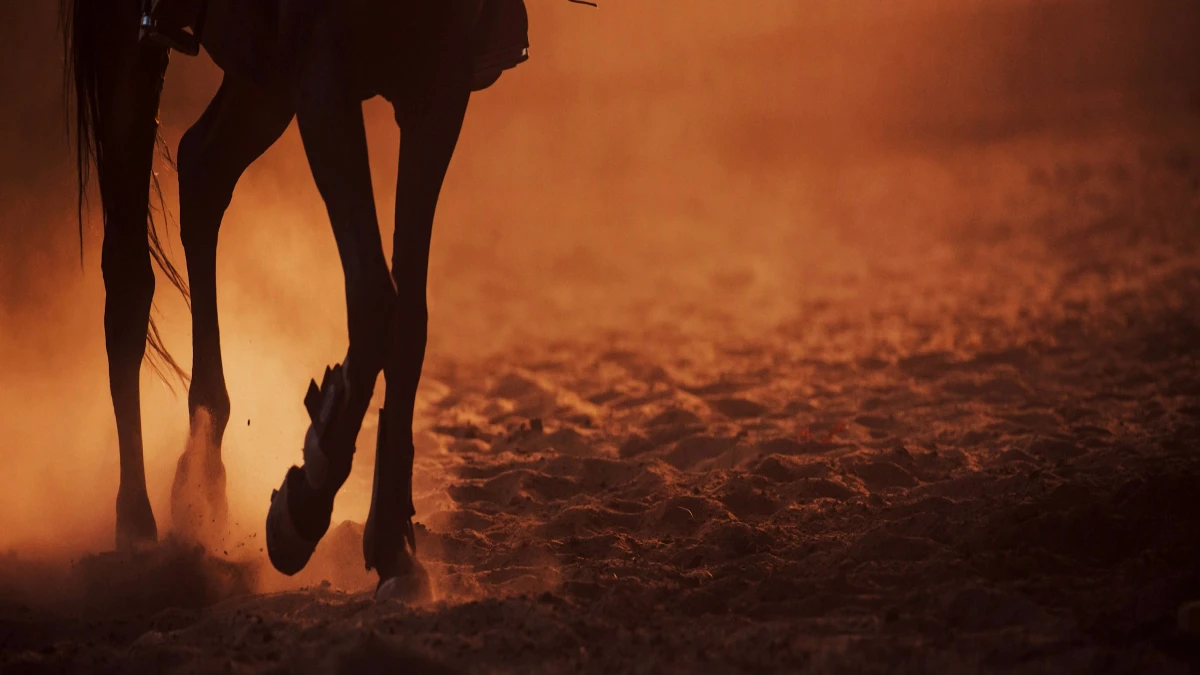5 Behaviour Issues and Resolutions
Sep 18, 2023 by Jamie Finch

Equine behaviour is a captivating and complex world that unfolds between your equine companions' graceful strides and powerful presence.
For those fortunate enough to share their lives with horses, understanding the intricacies of their behaviour is not merely a hobby; it's a necessity.
Whether you're a seasoned equestrian, a new horse owner, or a curious observer, delving into equine behaviour provides profound insights into the magnificent creatures you cherish.
In this blog, I explore the top 5 behaviour issues that horses commonly present, the effective resolutions that can enhance their well-being, and the harmony between horse and rider.
These behavioural challenges can range from mildly frustrating to potentially dangerous, and anyone involved with horses must grasp the underlying causes and seek appropriate solutions.
Each horse is unique, with its history, temperament, and experiences. Still, they all share certain behavioural traits deeply rooted in their evolutionary history.
By delving into these issues and their resolutions, you aim to empower horse owners, trainers, and enthusiasts alike with the knowledge and tools to build stronger, more respectful, and safer relationships with these magnificent animals.
Aggression
Aggression in horses can be a daunting issue, and it often leaves horse owners perplexed and even fearful.
Understanding the root causes of aggression is the first step toward finding effective resolutions.
Horses can display charge for various reasons, and it's crucial to identify these triggers to address them appropriately.
Causes of Aggression
Fear: As prey animals, horses have an instinct to defend themselves when they perceive a threat. Fear-based aggression can manifest when a horse feels cornered, trapped, or exposed to unfamiliar or threatening stimuli.
Dominance: Horses are hierarchical animals, and establishing a pecking order is a part of their social structure. Aggression may occur when a horse seeks to dominate others, especially in group settings.
Territoriality: Some horses are highly territorial and may become aggressive when other horses or individuals encroach on their perceived territory, such as their stall or feeding area.
Resolutions and Strategies for Handling Aggression
Training Techniques: Employ positive reinforcement training methods to encourage desired behaviour. Rewarding calm and non-aggressive behaviour with treats or praise can help reshape the horse's responses.
Behavioural Modification: Work with a professional equine behaviourist or trainer who can develop a tailored behaviour modification plan for the horse. This plan may include desensitisation exercises and systematic exposure to triggers, gradually increasing the horse's tolerance.
Safety Precautions: Safety should be a top priority when dealing with aggressive horses. Always maintain a safe distance and be prepared to use appropriate safety equipment, such as a barrier or a long lead rope, to protect yourself in case of aggressive outbursts.
Aggression in horses can be a challenging issue to address.
Still, with patience, consistency, and the right strategies, it is often possible to help a horse overcome this behaviour and build a more harmonious relationship.
Separation Anxiety
Separation anxiety is a common behaviour issue in horses that can lead to distressing situations for the horse and its owner.
Horses are inherently social animals, forming strong bonds with their herd mates and human companions.
They can exhibit signs of anxiety and stress when separated from their preferred companions.
Defining Separation Anxiety
Separation anxiety in horses is characterised by a heightened emotional response when they are removed from their preferred social group, whether it consists of other horses or specific human handlers.
Some common signs of separation anxiety include excessive vocalisation (whinnying), pacing, restlessness, sweating, and even attempts to escape enclosures.
Common Triggers for Separation Anxiety
Understanding the triggers of separation anxiety is crucial in addressing this issue effectively.
Moving to a New Barn: Transitioning to a new environment or herd can be stressful for horses, especially if separated from their familiar companions.
Isolation: Isolating a horse for medical reasons or during training can trigger anxiety, as social animals thrive on interaction.
Resolutions and Strategies for Addressing Separation Anxiety
Desensitisation and Counterconditioning: Gradually expose the horse to situations that trigger separation anxiety in a controlled and positive manner. For example, practice separating the horse and its preferred companion for short periods, gradually increasing the duration. Reward the horse for calm behaviour during these separations.
Socialisation and Companionship Solutions: Ensure the horse can access a compatible companion, whether it's another horse or a well-bonded handler. This can alleviate the anxiety associated with isolation.
Creating a Comforting Environment: Provide a comfortable and enriching environment for the horse, including access to shelter, fresh water, and forage. Additionally, offer mental stimulation through toys or activities to keep the horse occupied and reduce stress.
Addressing separation anxiety requires patience and a gradual approach. Working with a professional equine behaviourist or trainer who can guide you through the process and tailor solutions to your horse's specific needs is essential.
Spookiness
Spookiness is a deeply ingrained behaviour in a horse's evolutionary history as a prey animal.
Horses have finely tuned senses and are naturally alert to potential threats in their environment.
While this vigilance is a survival instinct, it can lead to moments of spookiness that challenge both horse and rider.
Understanding Spookiness
Spookiness refers to a horse's sudden, strong reaction to a perceived threat, unfamiliar object, or sound.
Common reactions include rapid movement, jumping, shying away, and sometimes bolting.
It's essential to differentiate between a genuine threat and a harmless stimulus when dealing with spookiness.
Factors Contributing to Spookiness
Genetics: Some horses are genetically predisposed to being more nervous and reactive, making them prone to spookiness.
Environmental Stimuli: Unfamiliar or sudden environmental stimuli, such as a loud noise, a plastic bag rustling in the wind, or a sudden movement, can trigger spookiness.
Resolutions and Strategies for Managing and Reducing Spookiness
Desensitisation Training: Gradual exposure to various stimuli in a controlled and safe environment can help desensitise a horse to potential triggers. This process builds the horse's confidence and reduces spookiness over time.
Building Trust and Confidence: Establishing a strong bond with your horse based on trust and confidence is crucial. Spend time with your horse, engage in groundwork exercises, and build a relationship based on trust and respect.
Environmental Management: Pay attention to your horse's environment. Minimise sudden and unexpected stimuli in the riding area and gradually introduce new objects or experiences to avoid overwhelming the horse.
Managing spookiness in horses requires patience and consistent effort. It's essential to remain calm and reassuring during spook episodes, as reacting with fear or frustration can exacerbate the problem.
By employing these strategies and understanding the underlying causes, you can help your horse become more confident and less prone to spookiness, making your rides safer and more enjoyable.
Trailer Loading Difficulties
Trailer loading difficulties are a common source of frustration for horse owners and handlers.
Whether you're preparing for a show, a trail ride, or a routine trip to the veterinarian, a horse that refuses to load into a trailer can create significant challenges.
Understanding the reasons behind trailer loading resistance is crucial to finding effective solutions.
Defining Trailer Loading Difficulties
Trailer loading difficulties encompass a range of behaviours where a horse resists entering or staying in a trailer.
This resistance can manifest as backing away, planting their feet, rearing, or bolting away from the trailer.
Reasons Behind Trailer Loading Resistance
Fear: Many horses associate the trailer with fear-inducing experiences, such as confinement or past negative incidents during transportation.
Past Negative Experiences: A horse's prior experiences with trailers can significantly impact their willingness to load. If they've encountered rough handling or stressful trips in the past, they may develop a strong aversion to trailers.
Resolutions and Strategies for Successful Trailer Loading
Gradual Desensitisation to the Trailer: Take a patient and systematic approach to desensitise the horse to the trailer. Start by allowing the horse to explore the trailer without load pressure. Use positive reinforcement to reward any steps in the right direction.
Positive Reinforcement Techniques: Encourage the horse to associate the trailer with positive experiences. Offer treats, praise, and reassurance when they willingly approach or load into the trailer.
Professional Assistance When Needed: If the horse's resistance persists, consider seeking professional help from a trainer or behaviourist experienced in trailer loading issues. They can provide guidance and specialised techniques tailored to the horse's needs.
Addressing trailer-loading difficulties may take time, especially if the horse has a history of negative experiences.
However, patience, positive reinforcement, and a calm approach can help your horse become more comfortable and confident with trailer loading. This can lead to smoother and less stressful transportation experiences for you and your equine companion.
Bucking and Bolting
Bucking and bolting are potentially dangerous behaviour issues that can put both riders and horses at risk.
These behaviours can stem from various causes, and understanding them is essential for ensuring the safety and well-being of all involved.
Understanding the Causes of Bucking and Bolting
Pain or Discomfort: Horses may buck or bolt in response to pain or discomfort, such as an ill-fitting saddle, dental issues, or an undiagnosed health problem.
Fear or Anxiety: As prey animals, horses have a natural flight response when they perceive danger. Fearful situations, such as encountering a predator-like object or a sudden loud noise, can trigger bucking or bolting.
Excess Energy: Some horses have excess energy that needs an outlet. They may release pent-up energy through bucking or bolting if not provided with sufficient exercise or mental stimulation.
Resolutions and Strategies for Addressing Bucking and Bolting
Proper Training and Riding Techniques: Working with an experienced trainer can help identify and address any training gaps or rider errors contributing to the behaviour. Consistent and clear cues, appropriate biting and tack, and proper warm-up routines are essential.
Gradual Desensitisation: If fear or anxiety triggers the behaviour, gradually expose the horse to the source of anxiety in a controlled and reassuring manner. This can help desensitise the horse and reduce its fear response.
Addressing bucking and bolting requires patience, professional guidance, and a thorough understanding of the underlying causes.
These behaviours can be challenging to manage, but with the right approach, many horses can overcome them, leading to safer and more enjoyable rides.
Conclusion
Understanding and addressing equine behaviour issues is rewarding for horse owners and enthusiasts alike.
These common challenges, including aggression, separation anxiety, spookiness, trailer loading difficulties, and bucking and bolting, offer opportunities to deepen the connection with your horse.
Patience and consistency are crucial, as behaviour changes take time, and clear communication is key to building trust.
When needed, seeking professional guidance from equine behaviourists and trainers can provide valuable insights and strategies tailored to your horse's unique needs.
Building trust and respect is at the heart of any successful partnership with a horse.
Explore More Topics
Understanding Behavioural Changes in Horses
When a horse’s behaviour suddenly changes, it’s rarely without cause. This blog explores the physical, emotional, and environmental reasons behind behavioural shifts — and how owners can respond with understanding, clarity, and care.
May 31, 2025
10 Essential Groundwork Exercises to Improve Equine Agility
This blog post, "10 Essential Groundwork Exercises to Improve Equine Agility," provides a comprehensive guide for horse owners looking to enhance their horse's agility, coordination, and responsiveness through progressive groundwork. Each exercise includes step-by-step instructions, explains why the exercise is important for building trust, focus, and physical conditioning, and details how these skills translate into improved performance in agility courses and other equestrian pursuits.
Oct 28, 2024
Top Tips for First-Time Horse Owners: How Equine Insurance Can Give You Peace of Mind
Equine insurance is a crucial safety net for horse owners, providing financial protection against unexpected costs related to veterinary care, accidents, injuries, and liability claims. Whether you're a first-time owner or an experienced equestrian, insuring your horse offers peace of mind by covering expensive vet bills, public liability issues, theft, and even death.
Oct 23, 2024







